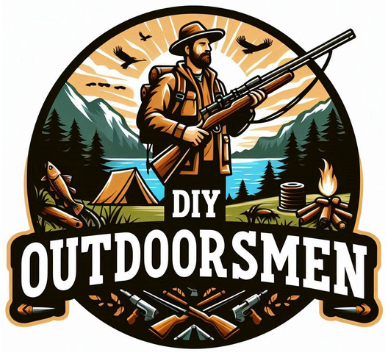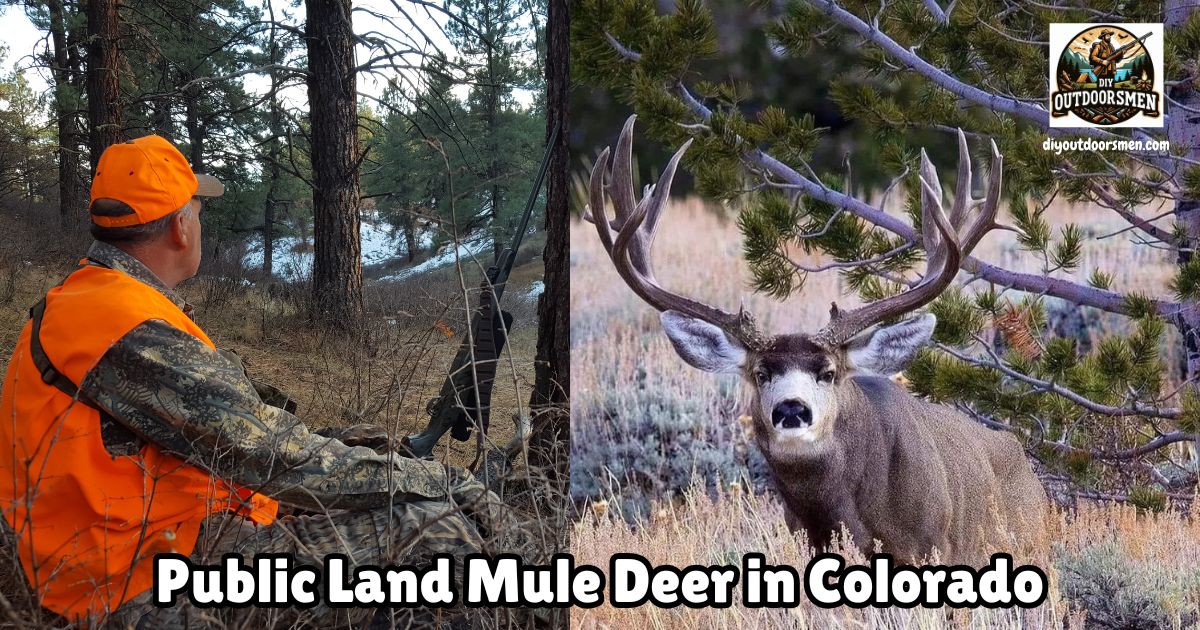Contents
- 1 Understanding Public Land Mule Deer Hunting in Colorado
- 2 Top Colorado Public Land Mule Deer Hunting Areas
- 3 Key Elements That Make a Unit Stand Out
- 4 Breaking Down the Colorado Draw Process
- 5 How to Prepare for Hunting Colorado Mule Deer on Public Land
- 6 Common Challenges in Colorado Public Land Mule Deer Hunting
- 7 Frequently Asked Questions About Public Land Mule Deer Hunting in Colorado
- 8 Final Thoughts on Colorado’s Public Land Mule Deer Hunts
Public land mule deer hunting in Colorado stands out as one of the best ways to get into the state’s wild and rugged landscapes. Every fall, Colorado pulls in hunters nationwide who are hoping for a shot at a big mountain buck. If you’re planning your first hunt or want a refresher on where to start, here’s an all-in-one guide based on my experience, along with tips useful for both beginners and veteran hunters.
QUICK LOOK: Top Units for Public Land Mule Deer Hunting in Colorado
- Gunnison Basin (GMUs 54, 55, 551, 67): This country is famous for older, larger bucks. The high-elevation aspen and oak brush offer deer plenty of space to hide, and late-season migrations during rifle hunts create better odds for those willing to put in the work. The mix of open basins and thick timber means glassing from ridges is my favorite move here.
- White River Area (GMUs 11, 33, 42, 52, 421): The White River Herd ranks among the biggest in the country. This spot mixes sage flats, aspens, and timber, offering both numbers and solid buck quality. Units close to Craig and Meeker are known for productive hunting. There’s easy access thanks to a good blend of BLM, state land, and the White River National Forest.
- Middle Park (GMUs 18, 28, 181): Deer are scattered throughout valleys and mountains here, with ample entry through USFS and BLM lands. I’ve found success after hiking farther than most folks, especially by focusing on transitional areas between open country and timber.
- Sangre de Cristo Range (GMUs 82, 86): Rugged, steep, and tough country, but for patient hunters, reward awaits. The landscape is demanding, but it’s the kind of place reclusive big bucks call home. The ticket here is to scout ahead and, later in the season, look in the lower-elevation brush for deer pushed out by snow.
- San Luis Lakes State Wildlife Area: Set in the San Luis Valley, this area has been gaining momentum recently. It offers a unique hunt for those wanting a different adventure and who are ready to work hard for a deer.
Understanding Public Land Mule Deer Hunting in Colorado
Colorado is popular for sound mule deer populations and quite a lot of public lands. Most hunting takes place on land managed by the Bureau of Land Management (BLM), United States Forest Service (USFS), or Colorado Parks and Wildlife (CPW).
These lands are open to anyone who has the right tag, but tracking down those places with large populations and bigger bucks calls for patience and a little bit of homework. I’ve learned that spending time on maps and scouting in person makes a big difference when hunting season rolls around.
The state is divided into Game Management Units (GMUs), appearing in regulations and hunt plans. Each GMU comes with its own set of rules, special boundaries, and draw odds. The best way to keep up with these differences is by regularly checking Colorado Parks and Wildlife resources and chatting with hunters who know the terrain well.
Top Colorado Public Land Mule Deer Hunting Areas
No area always takes the prize every season due to changing conditions and hunting pressure. Still, a handful consistently deliver for me and for fellow hunter friends. Here’s a breakdown of spots that come up often in our conversations:
- Gunnison Basin (GMUs 54, 55, 551, 67): This country is famous for older, larger bucks. The high-elevation aspen and oak brush offer deer plenty of space to hide, and late-season migrations during rifle hunts create better odds for those willing to put in the work. The mix of open basins and thick timber means glassing from ridges is my favorite move here.
- White River Area (GMUs 11, 33, 42, 52, 421): The White River Herd ranks among the biggest in the country. This spot mixes sage flats, aspens, and timber, offering both numbers and solid buck quality. Units close to Craig and Meeker are known for productive hunting. There’s easy access thanks to a good blend of BLM, state land, and the White River National Forest.
- Middle Park (GMUs 18, 28, 181): Deer are scattered throughout valleys and mountains here, with ample entry through USFS and BLM lands. I’ve found success after hiking farther than most folks, especially by focusing on transitional areas between open country and timber.
- Sangre de Cristo Range (GMUs 82, 86): Rugged, steep, and tough country, but for patient hunters, reward awaits. The landscape is demanding, but it’s the kind of place reclusive big bucks call home. The ticket here is to scout ahead and, later in the season, look in the lower-elevation brush for deer pushed out by snow.
- San Luis Lakes State Wildlife Area: Set in the San Luis Valley, this area has been gaining momentum recently. It offers a unique hunt for those wanting a different adventure and who are ready to work hard for a deer.
Key Elements That Make a Unit Stand Out
What separates Colorado’s top public mule deer hunting units from the rest? After years of chasing deer and exchanging notes with other hunters, these main points stand out:
- Buck-to-Doe Ratios and Genetics: Certain units focus on having more mature bucks with solid genetics. The Gunnison basin and White River region are often at the top of the list for these qualities.
- Public Access and Terrain: Big patches of BLM and National Forest make it easier to get away from the crowds. Road closures and walk-in zones help spread people out. My go-to resources here are onX and the CPW Hunt Atlas, both of which help track down those hidden corners.
- Habitat Variety: Spots with a range of habitats—sage, aspens, dark timber, and open parks—regularly turn up more deer and increase the odds of stumbling upon a mature buck.
Breaking Down the Colorado Draw Process
Every mule deer tag in Colorado is given out through the big game draw. It’s not possible to just show up and pick up a tag in most cases. The application window starts in March and ends in early April. Planning is huge, since Colorado uses a preference point system.
Building up points is often needed for popular units, so every year you don’t draw, you can still put a point in the bank for the future. Especially for nonresidents, early rifle and late seasons with higher demand may take five to ten years (sometimes even more) to draw with enough points.
I recommend applying for a mix of units, putting your name in for high-demand spots but also including places where you stand a reasonable chance of hunting every year. That way, you keep learning while still building points for your dream hunt someday.
How to Prepare for Hunting Colorado Mule Deer on Public Land
Before every hunt, I pour hours into learning access points, figuring out where deer migrate, and marking glassing spots. Here’s my routine:
- E-Scouting: Digital maps like onX, Google Earth, and the CPW Hunt Atlas are game changers. I use them to look for water, bedding zones, escape routes, and possible parking spots. Good e-scouting pays off by saving time and helping nail down backup plans in advance.
- Fitness: Colorado’s higher elevations mean you’ll be breathing a bit harder than usual, even for short hikes. I recommend off-season hiking with a loaded pack to get your legs and lungs in gear before you hit the mountains for real.
- Gear and Weather: October and November bring wild weather swings—snow, rain, wind, and everything else. Pack smart: layer clothing, bring waterproof boots, and throw in a water filtration system and extra snacks. A heavy-duty pack can carry all your essentials for those long days away from base camp.
- Check Regulations: Each unit can set its own rules for vehicles, camping, or ammo. I always read through the CPW big game brochure, verify land access, and call the local wildlife officer. It’s better to clear up questions ahead of time than risk a fine or issue later on.
Common Challenges in Colorado Public Land Mule Deer Hunting
Colorado mule deer hunting keeps you on your toes. Here are the main obstacles I run into the most:
- Hunting Pressure: Places close to roads often fill up with hunters, especially early in the season. Getting in early—often before shooting light—and pushing farther off the beaten path pays off.
- Weather Fluctuations: Sudden storms or drought can scatter deer. By always staying flexible and checking weather forecasts, I can switch tactics and find deer that might have left their usual hangouts.
- Fluctuating Migration: Deer move quickly if the weather changes. Keeping an eye on recent sightings and doing some last-minute scouting before opening day are musts for success.
My Go-To Strategies for Success on Public Land
After many seasons in Colorado, a few things have stepped up my odds of tagging a deer:
- Cut off-trail and away from roads as early as possible; deer pick up on hunting pressure fast.
- Set up on high points at daylight and dusk—glassing has accounted for most of my sightings.
- Slow, quiet approaches matter, especially when snow is fresh or during the rut.
Frequently Asked Questions About Public Land Mule Deer Hunting in Colorado
I get asked plenty of questions by first-timers and folks planning a Colorado hunt. Here are a few with my thoughts:
Do I need to hire a guide for public land mule deer hunting in Colorado?
A lot of hunters find success on their own through research and effort. A guide can help in tough-to-draw or hard-to-navigate units, but much of Colorado’s public land is accessible with the right preparation.
What’s the best way to handle hunting pressure on public land?
My approach is to hunt farther from roads and use maps to spot bottlenecks and benches that deer use but humans often don’t. Early weekday hunts and going out during harsh weather also helps avoid crowds.
How many preference points does it take to hunt a trophy unit?
It changes yearly, but the best units can need five or more points for residents and up to ten or more for nonresidents. Some units release more tags, letting you draw with fewer points. Always check updated stats before applying.
Final Thoughts on Colorado’s Public Land Mule Deer Hunts
Each hunt for mule deer on Colorado’s public lands is its own adventure. Mountain views, untamed spaces, and the possibility of spotting a trophy buck keep me coming back. The secret to a great hunt is planning, consistent scouting, and being on top of the details that can turn the odds in your favor. With time and effort, Colorado offers up some awesome chances for hunters chasing mule deer.
Most Recent Articles:
- 5 Best Public Land Mule Deer Hunting In Colorado
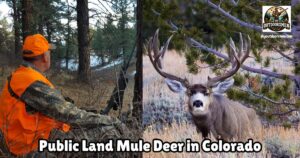
- Bow Hunting For Mule Deer
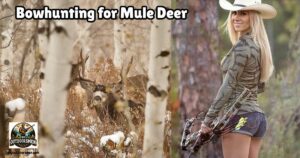
- Best Public Land Mule Deer Hunting
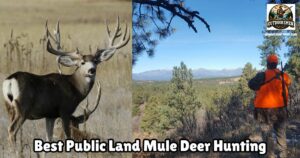
- Drone-Based Scouting Services For Mule Deer
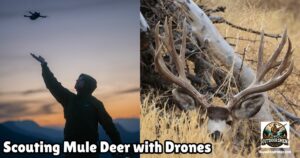
- Late Season Mule Deer Hunting Tips
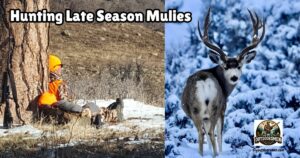
- 8 Tips for Dealing with Hunting Pressure While Mule Deer Hunting
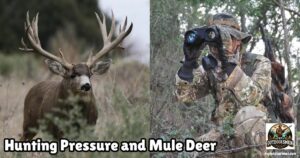
As always, stay safe, enjoy the journey, and please try to leave it cleaner than you found it. If you have any comments, questions, ideas, or suggestions, please leave them in the comment section below, and I’ll get back to you ASAP. You can follow us on YouTube: Man Art Creations for videos of our DIY Adventures.
P.S. Thanks so much for checking out our blog; we really appreciate it. Just so you know, we may receive a commission if you click on some of the links that appear on our site. This helps us keep our content free and up-to-date for everyone. We appreciate your support!
